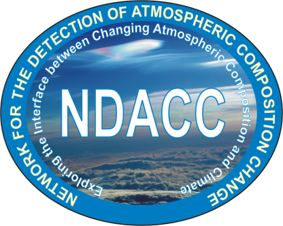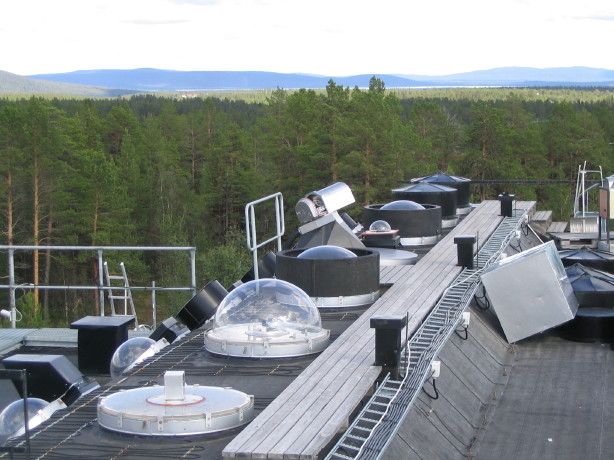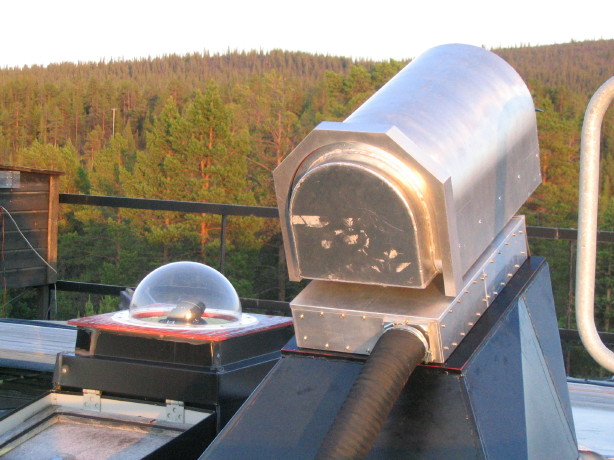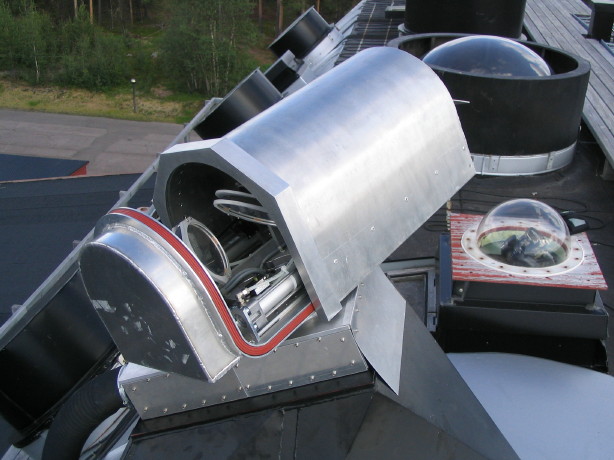IRF Kiruna, Sweden (67.8 N, 20.4 E, 420 m a.s.l.)
Since winter 1989/90 ground-based FTIR measurements were performed during each winter. History of the experiment is shown here.
 Since March 1996 a BRUKER® 120 HR is operated continuously at the Swedish Institute of Space Physics (Institutet foer Rymdfysik, IRF, Dr. Uwe Raffalski) at Kiruna (67.8 N, 20.4 E, 420 m a.s.l.). This is a joint project of the IRF in Kiruna, the Solar Terrestrial Environmental Laboratory (STEL) at the University of Nagoya (Japan) and the IMK at the KIT Karlsruhe (Gernany). The instument is part of the NDACC (Network for the Detection of Atmospheric Composition Change).
Since March 1996 a BRUKER® 120 HR is operated continuously at the Swedish Institute of Space Physics (Institutet foer Rymdfysik, IRF, Dr. Uwe Raffalski) at Kiruna (67.8 N, 20.4 E, 420 m a.s.l.). This is a joint project of the IRF in Kiruna, the Solar Terrestrial Environmental Laboratory (STEL) at the University of Nagoya (Japan) and the IMK at the KIT Karlsruhe (Gernany). The instument is part of the NDACC (Network for the Detection of Atmospheric Composition Change).

Fig. 1: Roof of the optical lab at IRF Kiruna.
An FTIR is operated at Kiruna (Sweden), because Kiruna
- is frequently inside the polar vortex or at its edge to study polar processes
- has a short polar night giving a rather long solar observation period
- is rather cold and dry for better quality of the infrared spectra
- is easy to access and offers a good infrastructure
- is a major location of European campaigns (due to the reasons mentioned above).

Fig. 2: Solar tracker and its cover on the roof of IRF Kiruna. Small dome on the left includes camera for cloud observation.
In March 1996 a BRUKER® 120 HR spectrometer has been set up.
In summer 2004 a remote control of the instrument was established. It includes MasterSwitch® to switch on and off all instruments, remote controlled cover of the solar tracker, remote controlled filling of liquid nitrogen, cloud camera and lab camera. This setup allows us to conduct measurements at Kiruna from Karlsruhe and to download data.
In summer 2007 the BRUKER® 120 HR spectrometer has been upgraded to a 125 HR. The upgrade mainly includes a completely new electronics with a new data acquisition scheme and a new scanner motor.
In summer 2010 the new camera based solar tracker software CAMTRACKER has been implemented.

Fig. 3: Solar tracker and its cover on the roof of IRF Kiruna. Open cover shows solar tracker in operation.
Within the COCCON (COllaborative Carbon Column Observing Network) network a compact FTIR spectrometer Bruker EM-27 is operated in the same lab since 2017. The COCCON type instrument allows us to measure greenhouse gases (GHG) with high precision. COCCON sites are listed here.

